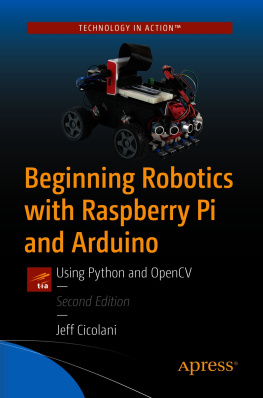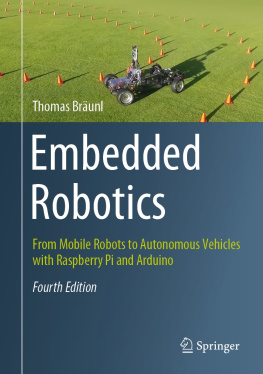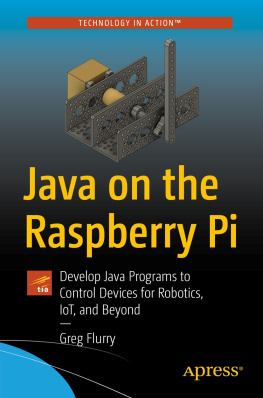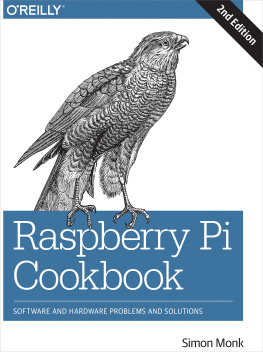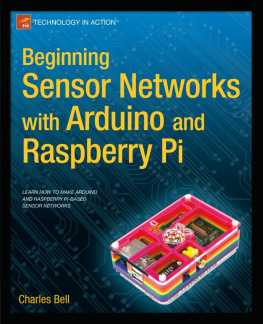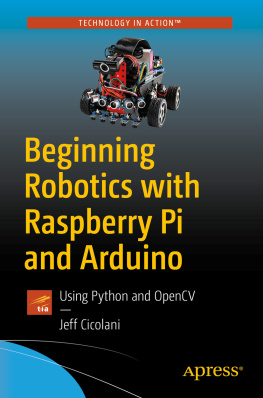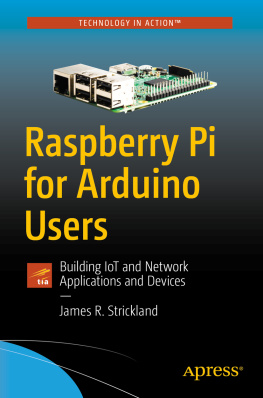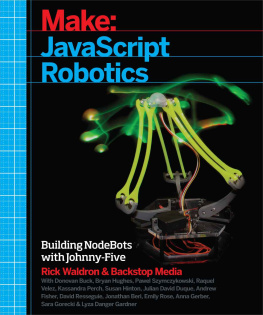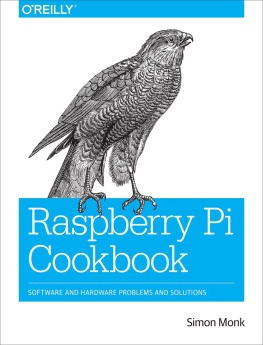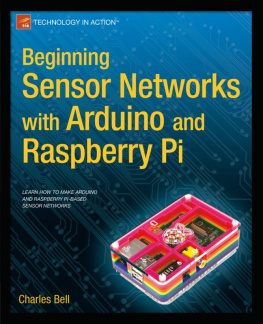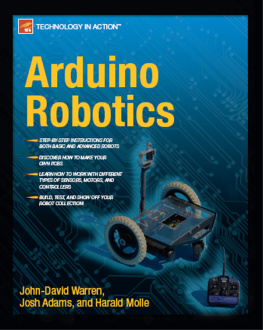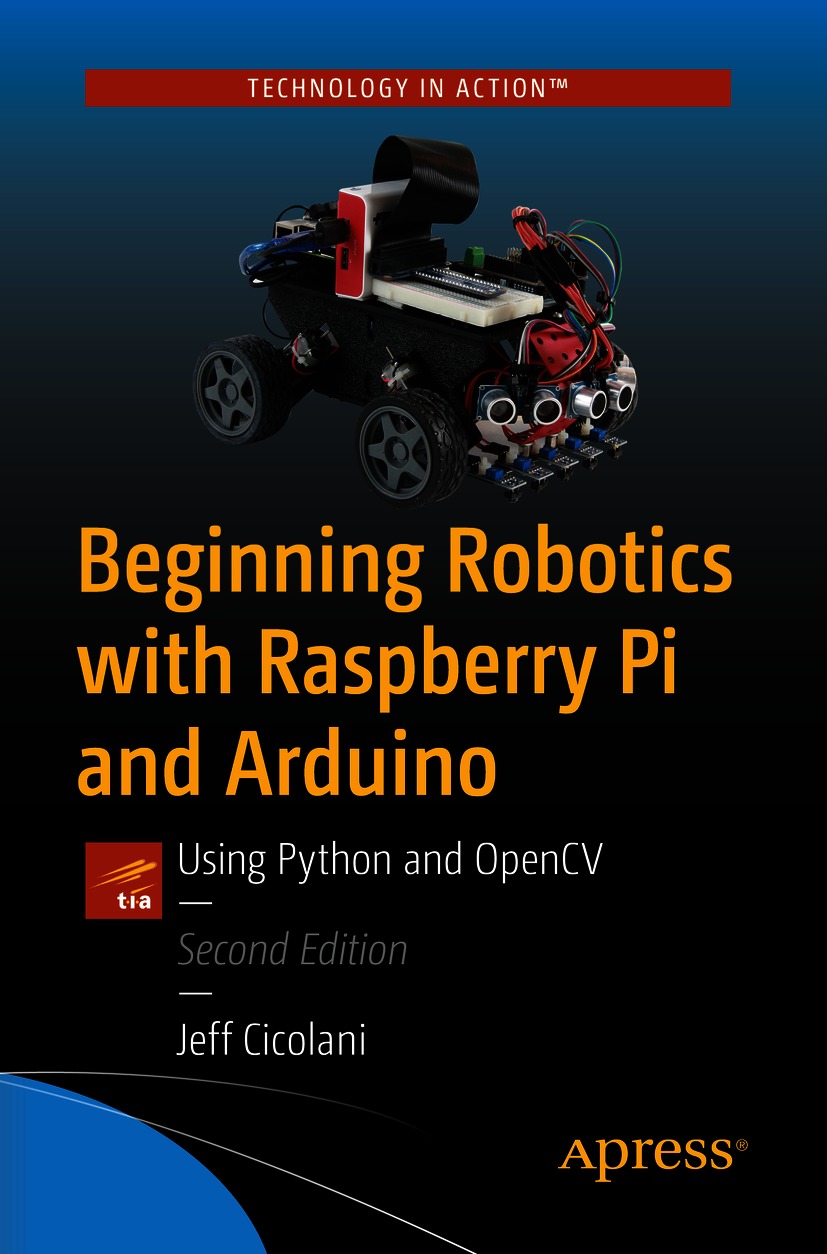Jeff Cicolani - Beginning Robotics with Raspberry Pi and Arduino: Using Python and OpenCV
Here you can read online Jeff Cicolani - Beginning Robotics with Raspberry Pi and Arduino: Using Python and OpenCV full text of the book (entire story) in english for free. Download pdf and epub, get meaning, cover and reviews about this ebook. year: 2018, publisher: Apress, genre: Home and family. Description of the work, (preface) as well as reviews are available. Best literature library LitArk.com created for fans of good reading and offers a wide selection of genres:
Romance novel
Science fiction
Adventure
Detective
Science
History
Home and family
Prose
Art
Politics
Computer
Non-fiction
Religion
Business
Children
Humor
Choose a favorite category and find really read worthwhile books. Enjoy immersion in the world of imagination, feel the emotions of the characters or learn something new for yourself, make an fascinating discovery.
- Book:Beginning Robotics with Raspberry Pi and Arduino: Using Python and OpenCV
- Author:
- Publisher:Apress
- Genre:
- Year:2018
- Rating:5 / 5
- Favourites:Add to favourites
- Your mark:
Beginning Robotics with Raspberry Pi and Arduino: Using Python and OpenCV: summary, description and annotation
We offer to read an annotation, description, summary or preface (depends on what the author of the book "Beginning Robotics with Raspberry Pi and Arduino: Using Python and OpenCV" wrote himself). If you haven't found the necessary information about the book — write in the comments, we will try to find it.
Learn how to use a Raspberry Pi in conjunction with an Arduino to build a basic robot with advanced capabilities. Getting started in robotics does not have to be difficult. This book is an insightful and rewarding introduction to robotics and a catalyst for further directed study.
Youll be led step by step through the process of building a robot that uses the power of a Linux based computer paired with the simplicity of Arduino. Youll learn why the Raspberry Pi is a great choice for a robotics platform; its strengths as well as its shortcomings; how to overcome these limitations by implementing an Arduino; and the basics of the Python programming language as well as some of the more powerful features.
With the Raspberry Pi you can give your project the power of a Linux computer, while Arduino makes interacting with sensors and motors very easy. These two boards are complimentary in their functions; where one falters the other performs admirably.
The book also includes references to other great works to help further your growth in the exciting, and now accessible, field of smart robotics. As a bonus, the final chapter of the book demonstrates the real power of the Raspberry Pi by implementing a basic vision system. Using OpenCV and a standard USB web cam, you will build a robot that can chase a ball.
What Youll Learn
- Install Raspbian, the operating system that drives the Raspberry Pi
- Drive motors through an I2C motor controller
- Read data through sensors attached to an Arduino
Hobbyists and students looking for a rapid start in robotics. It assumes no technical background. Readers are guided to pursue the areas that interest them in more detail as they learn.
Jeff Cicolani: author's other books
Who wrote Beginning Robotics with Raspberry Pi and Arduino: Using Python and OpenCV? Find out the surname, the name of the author of the book and a list of all author's works by series.

